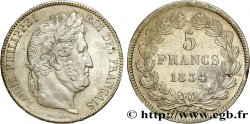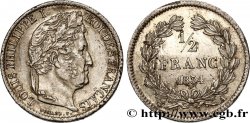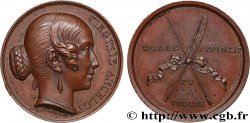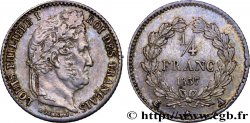fme_367362 - LOUIS-PHILIPPE I Médaille commémorant l’homéopathie
无库存.
所有在网站上销售的产品 (2016)
价格 : 200.00 €
所有在网站上销售的产品 (2016)
价格 : 200.00 €
种类 Médaille commémorant l’homéopathie
日期: 1835
铸币厂名称/城市 69 - Lyon
材质 bronze
直径 51 mm
模子方针 12 h.
重量 69 g.
侧面 lisse
关于品相的说明
Superbe médaille avec une patine sombre et irisée
正面
正面的文字 MIRE SENATI GRATITUDINIS MEMORES //SIMILIA SIMILIBUS / LUCD / MDCXXXV.
正面的说明书 Tête nue, à l’antique, de Sébastien des Guidi à gauche.
背面
背面的文字 L’AN 1830 / L’HOMÉOPATHIE / A ÉTÉ INTRODUITE À LYON / ET PROPAGÉE EN FRANCE / PAR / LE DOCTEUR C. SÉBASTIEN / DES GUIDI..
背面的说明书 Légende en 7 lignes dans une couronne végétale, entourée d’un serpent.
评论
Le comte Sebastien des Guidi (1769-1863), d'origine italienne, est souvent donné comme l'introducteur de l'homéopathie en France, à Lyon,en 1830. Il fonde la Société homéopathique lyonnaise qui sera plus tard à l'origine de la Société gallicane. Dès 1827 à Strasbourg Bigel écrivit sur les travaux de Samuel Hahnemann tandis que Paul Curie donnait des consultations à Paris dès 1824. À partir de 1832, l'essentiel des œuvres d'Hahnemann commence à être disponible en Français. Hahnemann lui-même s'installera à Paris en 1835. L'homéopathie pénètrera rapidement en France, à Paris - et à Lyon - bien sûr, mais aussi en Province.
L'homéopathie rencontra assez tôt l'opposition des autorités médicales. En 1835 l’Académie de médecine, qui se sent en position de faiblesse, condamne l’homéopathie, ce qui n'empêchera pas cette dernière de prospérer. Fin 1858, à la suite d'un procès en diffamation intenté par douze homéopathes au journal l'Union médicale devant la première chambre du Tribunal civil de la Seine, l’homéopathie reçoit un « blâme » des tribunaux.
En 1865, le Sénat de l’Empire émet un vote dilatoire publié dans le Moniteur universel. Le ministre de l’instruction publique autorise toutefois l’enseignement de l’homéopathie.
Le développement de l'homéopathie en France se fait par le biais de diverses organisations..
L'homéopathie rencontra assez tôt l'opposition des autorités médicales. En 1835 l’Académie de médecine, qui se sent en position de faiblesse, condamne l’homéopathie, ce qui n'empêchera pas cette dernière de prospérer. Fin 1858, à la suite d'un procès en diffamation intenté par douze homéopathes au journal l'Union médicale devant la première chambre du Tribunal civil de la Seine, l’homéopathie reçoit un « blâme » des tribunaux.
En 1865, le Sénat de l’Empire émet un vote dilatoire publié dans le Moniteur universel. Le ministre de l’instruction publique autorise toutefois l’enseignement de l’homéopathie.
Le développement de l'homéopathie en France se fait par le biais de diverses organisations..








 对产品描述纠错
对产品描述纠错 打印
打印 分享我的选择
分享我的选择 提问
提问 Consign / sell
Consign / sell
 产品介绍
产品介绍



